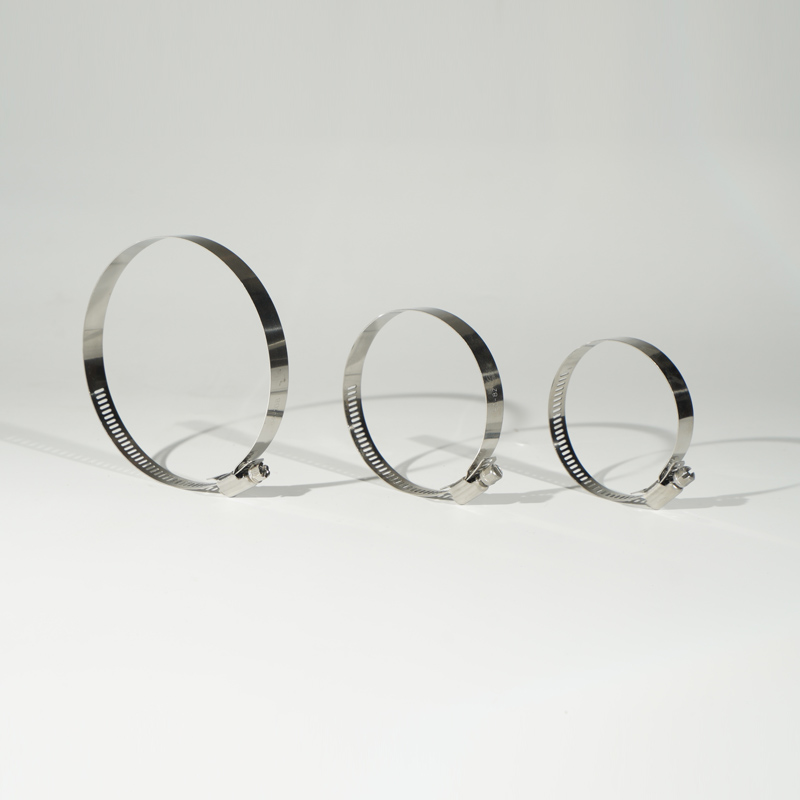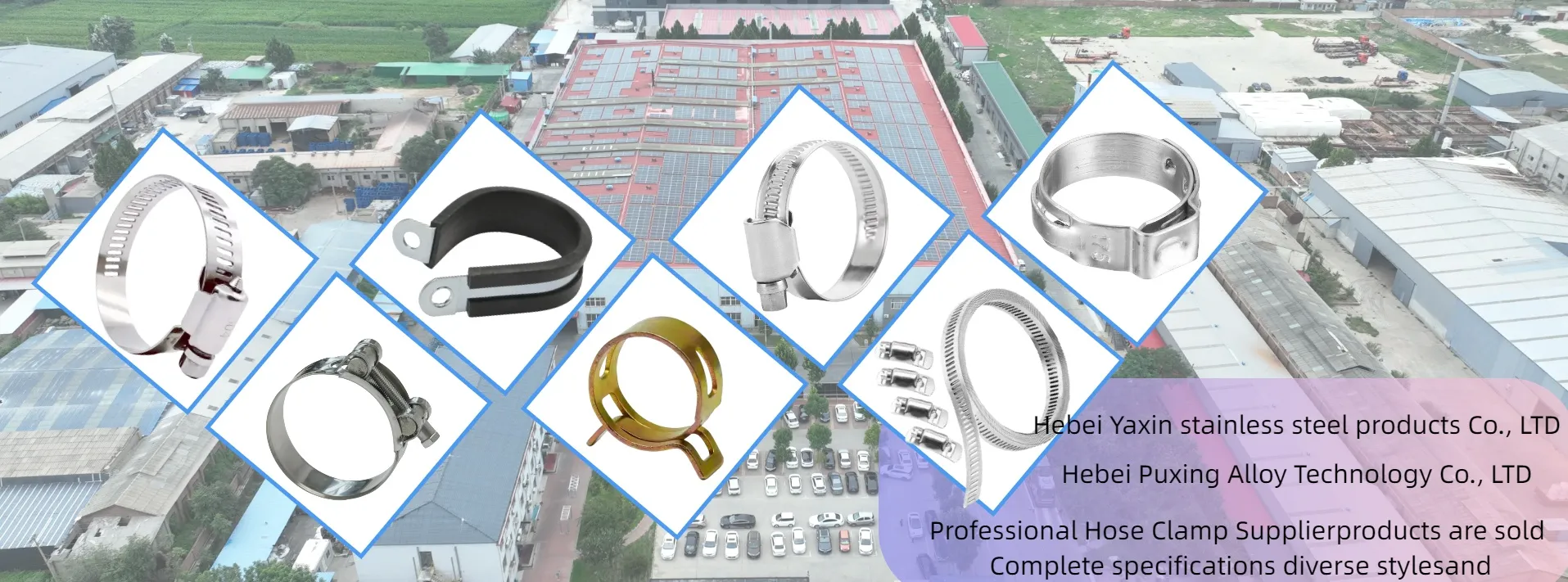- Phone:+86-17331948172 +86-0319-8862898
- E-mail: inquiry@puxingclamp.com
تەموز . 07, 2025 05:35 Back to list
Mini Hose Clamp Manufacturer & Supplier Precision Hose Clamps Mini Clamp Factory
- Introduction to mini hose clamp
s and their increasing demand - Technical advantages of modern mini hose clamps
- Comparative analysis of mini hose clamp manufacturers, factories, and suppliers
- Customization options and considerations in the mini hose clamp industry
- Practical applications and real-world success cases
- Key considerations for procurement
- Conclusion – mini hose clamp impact and market insights

(mini hose clamp)
Introduction: The Rising Focus on Mini Hose Clamp Solutions
Over the past decade, the mini hose clamp has emerged as an indispensable fastener in fluid and air transmission systems worldwide. Increasing demand for compact, versatile mechanical joining solutions in automotive, industrial, home, and medical sectors has accelerated both production volume and technical innovation. According to market analysis, the global hose clamp market exceeded USD 3 billion in 2023, with mini variants accounting for nearly 27% of all clamps supplied by leading hose clamps mini clamp manufacturers.
The mini hose clamp’s enhanced adaptability to tight spaces and small-diameter pipes has driven usage in scenarios where standard clamps fall short. Reliable sealing, durability, and ease of installation—combined with cost-effectiveness—make these miniature clamps a manufacturer and engineer favourite. From original equipment (OE) installations to aftermarket repairs, demand trends signal an enduring shift towards more compact, high-performance solutions delivered by hose clamps mini clamp factory leaders and suppliers.
Technical Advancements Redefining Mini Hose Clamp Performance
Today’s mini hose clamp stands as a testament to precision engineering. Unlike traditional clamps, which often struggle with micro-vibrations and pressure fluctuations, mini variants utilize advanced manufacturing processes such as CNC cutting, progressive stamping, and laser welding. These techniques yield products with superior consistency and mechanical stability, especially when crafted by specialized hose clamps mini clamp suppliers.
High-quality mini hose clamps are increasingly manufactured from 304/316 stainless steel, zinc-plated mild steel, or specialized composites, providing:
- Corrosion resistance exceeding 1000 hours salt spray testing
- Precision torque tolerance: deviation of less than +/- 0.3 Nm
- Leak-proof clamping pressure for diameters from 6mm to 27mm
- Thermal stability up to +180°C
State-of-the-art designs such as worm-drive micro clamps, constant-tension types, and spring-loaded miniature clamps now dominate technical catalogs, enabling engineers to find optimal solutions for challenging assemblies.
Comparative Profile: Hose Clamps Mini Clamp Manufacturers, Factories, and Suppliers
Selecting between different hose clamps mini clamp manufacturers, factories, and suppliers requires a thorough understanding of their distinct strengths, market reputation, and technical benchmarks. Below, a data-driven comparative table highlights key parameters for leading industry entities, based on 2023 procurement trends and verified product reports.
| Company Type | Avg. Production Volume (pcs/month) | Material Options | Minimum Order Quantity (MOQ) | ISO Certification | Delivery Lead Time | Customization Capacity | Client Portfolio |
|---|---|---|---|---|---|---|---|
| Manufacturer A | 1,200,000 | SS304, SS316; Zinc-Coated | 1,000 | ISO 9001:2015 | 14-20 days | Advanced | Top-tier OEMs, Automotive |
| Factory B | 800,000 | SS304, Mild Steel | 500 | ISO/TS 16949 | 10-15 days | Standard | Industry, Aftermarket |
| Supplier C | 650,000 | Stainless Steel, Brass | 250 | ISO 9001:2008 | 18-25 days | Moderate | Distributors, Retail |
As presented, factories tend to offer shorter lead times and competitive MOQs, while manufacturers excel in advanced customization and strict quality assurance. Suppliers, acting as bridges between factories and end-users, provide flexible order fulfillment and access to a range of brands under one umbrella.
Customization and Product Development Insights
Diverse industrial specifications, environmental conditions, and cost targets necessitate versatile customization options for mini hose clamps. Top-performing hose clamps mini clamp manufacturers and factories provide tailored parameters such as:
- Non-standard clamp diameters (down to 5mm or up to 35mm)
- Bespoke band widths and thicknesses
- Personalized logo embossing and laser marking
- Special coatings for chemical resistance (such as PTFE and epoxy)
- Vibration-absorbing inserts and bi-material bands
Effective product development includes intensive prototype cycles, finite element simulation (FEM) for stress analysis, and accelerated lifecycle testing under real-world conditions. By leveraging these capabilities, buyers can partner with factories or suppliers to co-engineer clamps that maximize safety and performance, addressing precise needs in automotive, food-processing, laboratory, or medical equipment. For bulk OEM projects, project management teams from leading manufacturers collaborate directly with client-side engineers, streamlining the design-to-production workflow.
Field Applications and Success Stories
Mini hose clamps have widely penetrated use-cases stretching across multiple industries, each with documented performance outcomes.
- Automotive: Lightweight mini clamps optimize engine bay airflow connections, cutting assembly time by 12% as proven by an OEM consortium report (2022).
- Medical Devices: Premium stainless steel versions enable sterile, leakproof joints. One leading US medical equipment manufacturer reduced contamination incidents by 98% post-implementation.
- Food & Beverage: Corrosion-resistant mini clamps withstand aggressive cleaning cycles, with lifecycle test results confirming up to 80,000 open/close operations without failure.
- Industrial Automation: Coil machinery and pneumatic equipment benefit from compact clamp profiles, improving equipment uptime and reducing replacement intervals by 30-40% annually.
These data-driven validations highlight not only reliability but also substantial cost savings and process efficiencies for users who choose optimized mini hose clamps.
Key Considerations for Procurement Success
For procurement professionals, navigating the mini clamps supply chain demands attention to several best practices:
- Evaluate supplier track record and quality certification coverage
- Scrutinize material traceability and product conformity declarations
- Align MOQ and lead time with your operational calendar
- Request batch samples and third-party performance certificates
- Confirm after-sales support and logistics flexibility (regional warehousing, expedited shipping, etc.)
- Monitor for regulatory compliance (e.g., RoHS, REACH, NSF)
Proactive engagement with reputable partners—preferably those offering robust R&D and customization—can yield sustainable value through every stage of the equipment lifecycle.
Conclusion: Mini Hose Clamp—Defining the Future of Secure Connections
In summary, the mini hose clamp sector is undergoing a quiet revolution, with technological refinements, modular product offerings, and tailor-made solutions now readily accessible from the world’s top hose clamps mini clamp manufacturers, factories, and suppliers. The upward trajectory in both demand and technical requirements signifies that mini hose clamps will continue to anchor the next generation of efficient, leak-proof system designs.
Smart buyers prioritize data-driven supplier selection, deep customization, and the proven reliability underscored by documented field outcomes. As global supply chains evolve, mini hose clamps stand out as a mission-critical component—ensuring reliable, cost-effective, and high-performance connections for tomorrow’s applications.

(mini hose clamp)
FAQS on mini hose clamp
Q: What is a mini hose clamp?
A: A mini hose clamp is a small-sized clamp used to secure hoses or tubes in tight spaces. It's commonly made of stainless steel or other durable materials. These clamps are ideal for small-diameter hoses.Q: How do I find reliable hose clamps mini clamp manufacturers?
A: You can search for reputable mini clamp manufacturers online or through industrial supply directories. Look for companies with good reviews and certifications. Request samples to ensure quality.Q: What are the advantages of sourcing from a hose clamps mini clamp factory?
A: Sourcing directly from a factory can offer lower prices and better customization. Factories may also provide faster bulk production. This is ideal for businesses needing large quantities.Q: Do hose clamps mini clamp suppliers offer custom sizes?
A: Many mini clamp suppliers provide custom size and material options. Contact suppliers directly to discuss your requirements. Custom orders may require a minimum purchase quantity.Q: Can I order hose clamps mini clamps in small batches from suppliers?
A: Some suppliers allow small batch or sample orders, especially for new customers. Check each supplier’s minimum order policy before purchasing. This helps ensure you get the right product for your needs.-
Precision High Quality Stainless Steel Strip Coils & Rolls
NewsAug.22,2025
-
Durable Adjustable Hose Clamps for Pipes & Radiators
NewsAug.21,2025
-
Heavy Duty Hose Clamps: Premium Stainless Steel & Adjustable
NewsAug.19,2025
-
Large Stainless Steel Adjustable American Type Hose Clamp - Hebei Pux Alloy Technology Co., Ltd
NewsAug.18,2025
-
Large Stainless Steel Adjustable Hose Clamp - Hebei Pux Alloy|Durable Corrosion Resistance&Adjustable Design
NewsAug.18,2025
-
Large Stainless Steel Adjustable Hose Clamp - Hebei Pux Alloy Technology Co., Ltd
NewsAug.18,2025




